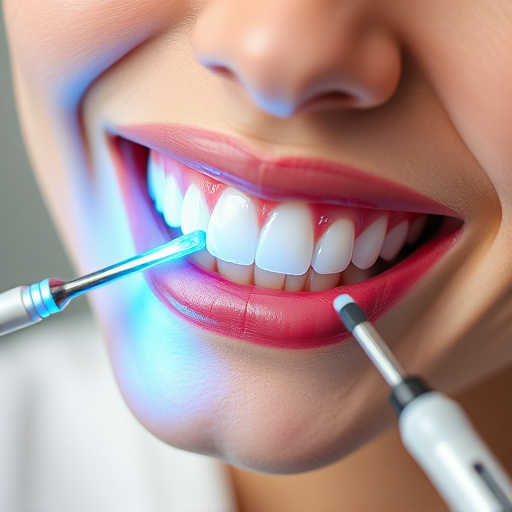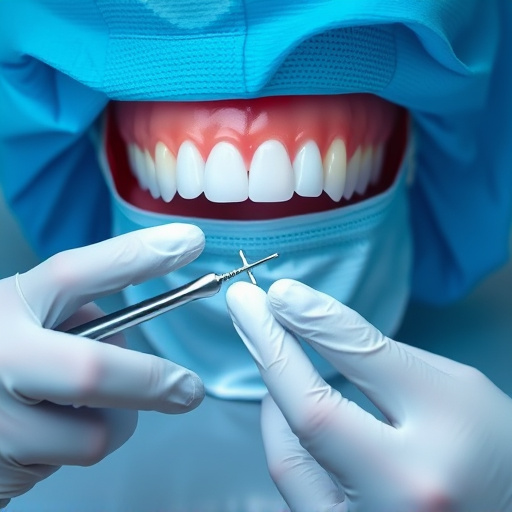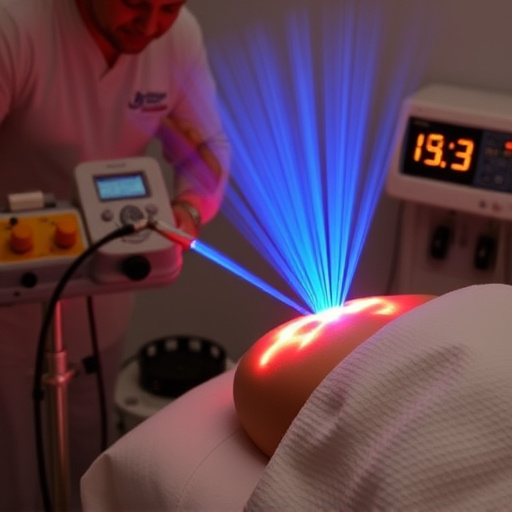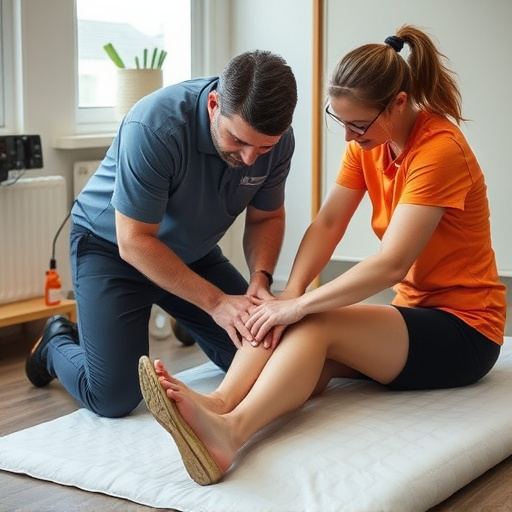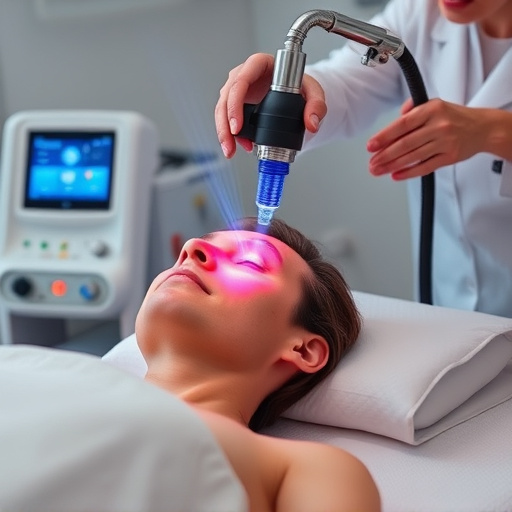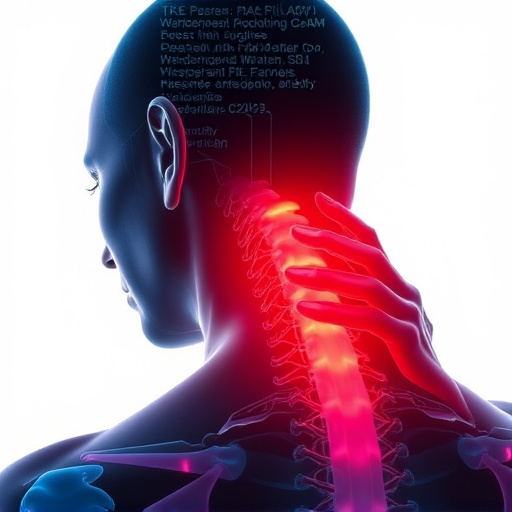Immediate and appropriate care is vital for favorable sports injury recovery. Initial treatment focuses on controlling bleeding, reducing inflammation, and providing pain relief. Early intervention includes non-invasive methods like physical therapy and over-the-counter pain relievers. Cutting-edge technologies like PRP and ESWT are transforming recovery with holistic approaches. Preventative measures and rehabilitation strategies significantly reduce injury risks and enable faster, comprehensive athlete recoveries.
In the fast-paced world of sports, injuries are an inevitable part of the game. Knowing the best sports injury treatment methods can significantly impact recovery time and future performance. This article delves into essential aspects of immediate care, advanced long-term recovery techniques, and preventative measures for athletes. From understanding acute injuries to implementing effective rehabilitation strategies, these expert-backed solutions aim to minimize downtime and optimize athletic potential. Discover proven methods for efficient sports injury treatment.
- Understanding Immediate Sports Injury Care
- Advanced Techniques for Long-Term Recovery
- Preventative Measures and Rehabilitation Strategies
Understanding Immediate Sports Injury Care
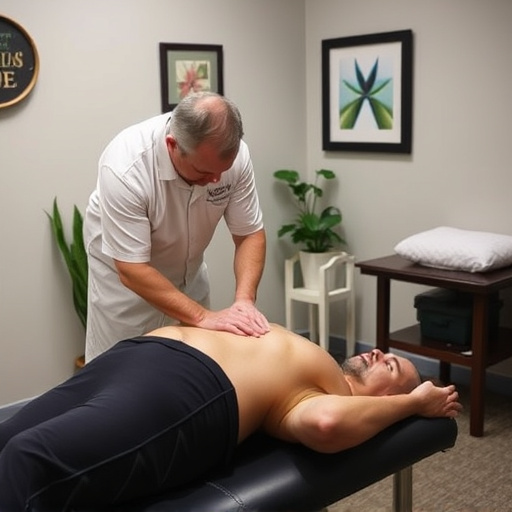
When a sports injury occurs, immediate and proper care is crucial for optimal recovery. The initial steps in sports injury treatment should focus on controlling any bleeding, reducing inflammation, and providing pain relief. This phase involves simple yet effective techniques like applying ice to reduce swelling, using compression bandages to minimize bruising, and elevating the affected area to alleviate discomfort. These measures help stabilize the injury and provide much-needed relief while preventing further damage.
Experts emphasize the importance of early intervention, especially for acute injuries sustained during physical activities or car accident injury care. Non-invasive treatment methods, such as physical therapy and over-the-counter pain relievers, are often recommended to manage joint pain relief and restore mobility. Prompt action not only accelerates healing but also reduces the risk of long-term complications, ensuring athletes can return to their active lifestyles faster.
Advanced Techniques for Long-Term Recovery

In the realm of sports injury treatment, advanced techniques have emerged to enhance long-term recovery. Beyond conventional methods, experts now leverage cutting-edge technologies and innovative strategies to cater to complex athletic injuries. For instance, non-invasive treatments such as platelet-rich plasma (PRP) therapy and extracorporeal shockwave therapy (ESWT) are gaining traction for their ability to stimulate natural healing processes without invasive surgery.
These advanced techniques offer a more holistic approach to sports injury recovery, focusing on regenerating tissues, reducing inflammation, and restoring function. PRP, rich in growth factors, accelerates the body’s natural repair mechanisms, while ESWT prompts the formation of new blood vessels and promotes tissue regeneration. As the demand for effective yet minimally invasive car accident injury care grows, these innovations promise to redefine the landscape of sports medicine, paving the way for faster and more comprehensive recovery for athletes across various disciplines.
Preventative Measures and Rehabilitation Strategies
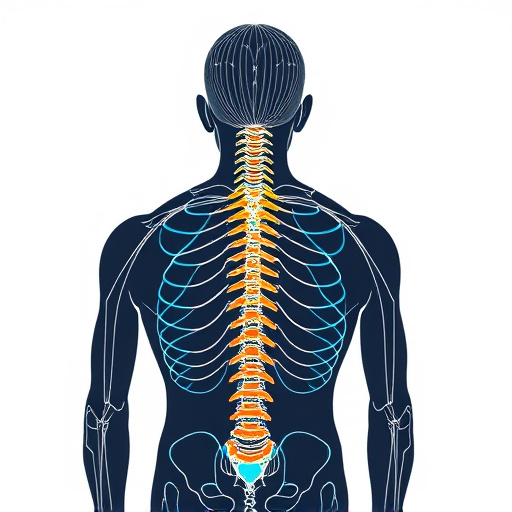
Preventative measures play a pivotal role in sports injury treatment. Athletes and active individuals can significantly reduce their risk of injuries by incorporating regular warm-up and cool-down routines, proper stretching exercises, and strength training into their fitness regimens. Balanced nutrition and adequate hydration are also essential to maintain optimal physical condition and enhance recovery.
Rehabilitation strategies are crucial for effective sports injury treatment, especially post-surgery or severe impact injuries. Customized rehab plans involving physical therapy, specialized exercises, and advanced technologies like ultrasound, electrical stimulation, and cold/heat therapy aim to restore joint mobility, alleviate pain (including joint pain relief), and regain muscle strength. Comprehensive rehab services focus on individual needs, ensuring athletes return to their sport at peak performance while minimizing the risk of future injuries, even after a car accident injury care scenario.
Sports injury treatment involves a multi-faceted approach, from immediate care to long-term recovery and preventative measures. By understanding and implementing these strategies, athletes can enhance their chances of full recovery and reduce the risk of future injuries. Advanced techniques, such as physical therapy and innovative treatments, play a crucial role in this process, ensuring athletes return to their peak performance safely and effectively.


